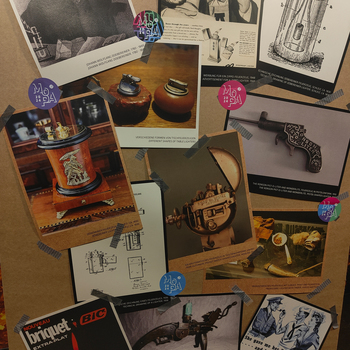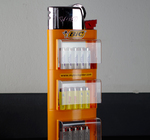
SAVE THE
DATE
Harley Davidson Days Hamburg // 26.6..-1.7.24
10 years Cybergroup BeachCup // 29.6.24
Harley Davidson Days Swiss // 3. - 8.7.24
Mustang Meeting Swiss // 2. - 4.8.24
From Prometheus to BIC
 The development of the lighter has traveled along a fascinating path from its mythical origins with Prometheus and Zeus to the groundbreaking invention of the cerium-iron alloy by Carl Auer von Welsbach. The transition from gasoline to gas lighters and the triumph of plastic lighters in the 1960s mark important turning points in its history.
The development of the lighter has traveled along a fascinating path from its mythical origins with Prometheus and Zeus to the groundbreaking invention of the cerium-iron alloy by Carl Auer von Welsbach. The transition from gasoline to gas lighters and the triumph of plastic lighters in the 1960s mark important turning points in its history.The history of fire is punctuated by myths, discoveries and inventions that have influenced mankind in many ways. Prometheus, according to Greek myth, once stole fire from Zeus, the father of the gods. But Zeus took his revenge by opening Pandora's box, bringing disease, war, pain and malice upon the world.
From earliest times, humans used fire to survive in colder climates. The oldest known fireplaces were discovered about 700,000 years ago in the L'Escale cave in southern France. Initially, people used sulfur gravel nodules from which glowing particles fell onto tinder. Proof that this technique was used about 30,000 years ago has been found in Vogelherd Cave in southern Germany.
Firesticks that produced sparks were first used in the 5th century B.C. in a Scythian tomb in Afghanistan. They remained the most common means of making fire until the 19th century, but were reserved only for a privileged few. It was not until the late 15th century that mechanical lighters emerged, however these were also still not widely used.
The real revolution in lighter technology came in 1823 when Johann Wolfgang Döbereiner, a chemist in Jena, discovered how to ignite a hydrogen-oxygen mixture on a platinum catalyst. This led to the development of Döbereiner lighters, which were popular in wealthy circles in the 19th century and were even praised by Johann Wolfgang von Goethe.
The modern lighter came into being in 1903 when the Austrian chemist Carl Auer von Welsbach, to whom mankind also owes the invention of gas lights and metal filament lamps, developed the so-called cerium-iron alloy. This ignition agent can still be found in almost every lighter today - whether it is a high-end Dunhill or a cheap plastic model. When this alloy is struck or subjected to friction, it projects hot, glowing sparks, reaching temperatures of up to 2000 degrees. This groundbreaking invention laid the foundation for the lighter manufacturing industry which has since expanded into every corner of the globe. By the time Auer von Welsbach died in 1929, world production of "his" flint had reached a record 100,000 kilograms.
In the 1950s gas lighters started to gradually replace gasoline lighters. Different versions exist of the history of how gas lighters were invented: Marcel Quercia from France claimed to have developed the first gas lighter called "Gentry" in 1947, but the Solingen-based company Kawe had already designed a prototype called "Pionier" in the 1930s, which, however, did not come onto the market because of the outbreak of the Second World War.
BIC began its conquest of the market 1973, with the development of the first disposable lighter with an adjustable flame. Like many of the products for everyday use which also have become popular as promotional items, inexpensive raw materials and mass production were the keys to its market success. Ever since the 1920s, another market trend has been developing. Extra high-quality and artistically designed Art Deco lighters have caught the eye of collectors. With their exterior design and complex mechanics, some particularly beautiful pieces bring the art of watchmaking to mind. These collector's items light up cigars and other smoking products even more stylishly.






